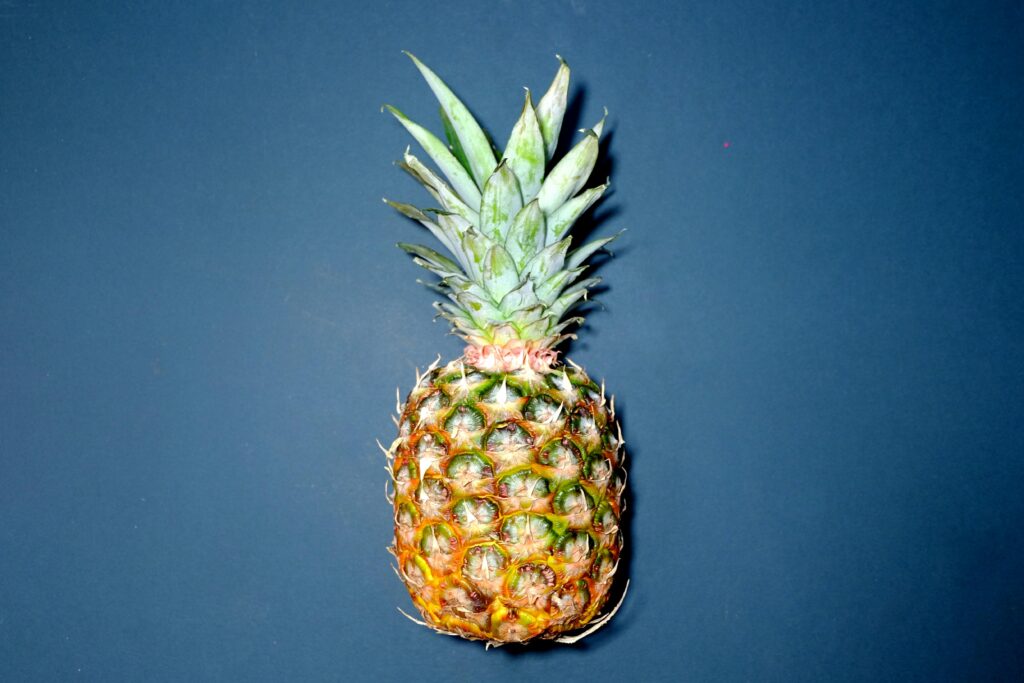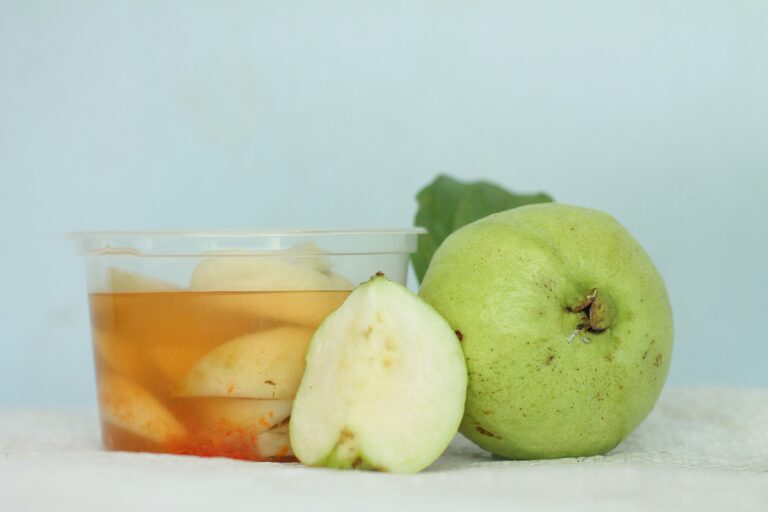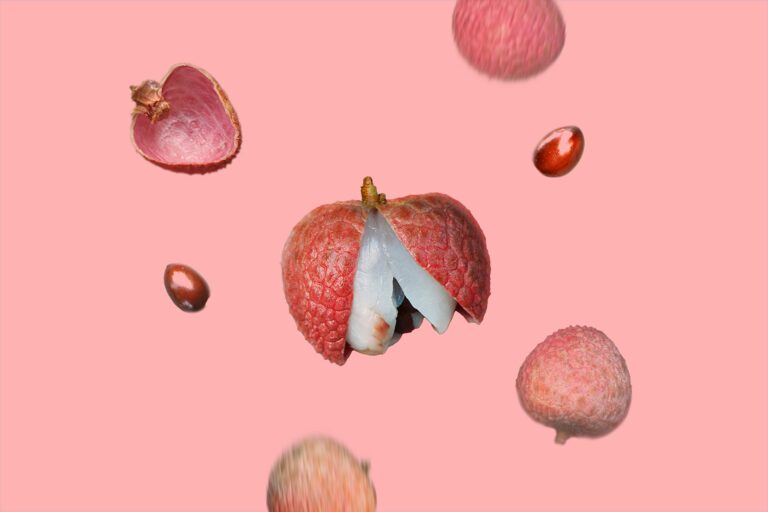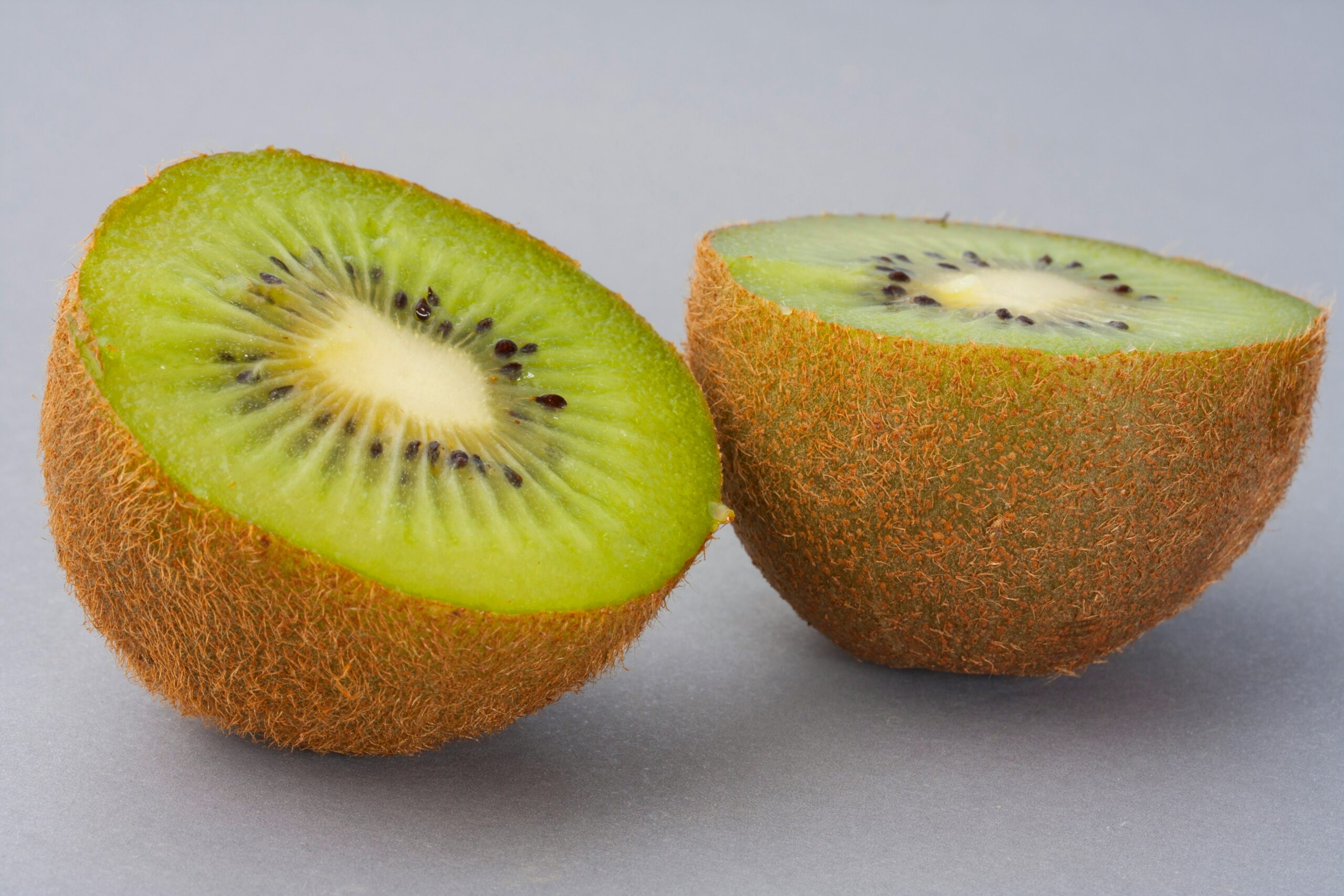The scientific name of pineapple is Ananas comosus. It is a tropical plant with an edible fruit. It is considered an herbaceous, monocot, perennial, and tropical plant. Pineapples originated from South America and Southern Brazil. The native South Americans had already domesticated the fruit. Pineapples quickly spread around the continent, reaching Mexico and the West Indies. Pineapple cultivation was introduced to India by the Portuguese.
Color: A ripe pineapple has a sunny, yellow, bright color. Unripe pineapple will be a more greenish-yellow color.
Shape: The pineapple is an oval and bulky fruit approximately 15 cm and 30 cm long. It is cone-shaped with waxy, tough skin.
Size: The average size is between 3 and 6 feet high and wide. Pineapples propagate vegetatively ( without flowers ) in various ways.
Flavor: The flavor of pineapple is a delightful balance of tart and sweet, fresh and juicy, and it tastes like sunshine.
Nutrients
Pineapple is a tropical fruit. It contains nutrients, antioxidants, and other compounds that can protect against inflammation and disease.
- Potassium 109 mg
- Total carbohydrate 13 g
- Sugar 10 g
- Vitamin C 79%
- Sodium 1 mg
- Saturated Fat 0.1 g
- Fiber 1.4 mg
- Protein 0.5 g
- Iron 1%
- Magnesium 3%
- Vitamin B6 5%
- Vitamin D 5 %
| How to grow a pineapple? |
The average time to grow the pineapple is about 18 months up to 3 years to produce edible fruits from seeds, Only one fruit is produced for the pineapple plant. Pineapples are plants you can indoors like other house plants. Choose a pineapple with as much bright yellow skin as possible. At first, remove the crown of your pineapple, then trim away excess fruit flesh, the bottom leaves, and the suckers. The small growth between the leaves. Trim the bottom of the stem by making small slices. Look for the root which will appear as a ring of tiny brown dots. This is where the root of the pineapple plant will emerge. Drying the stalk can take a couple of days, depending on humidity. Place the stalk in a warm, sunny area with good air conditions. This will allow the excess moisture that can cause rot to evaporate away and then place the crown in a gar with warmth. Make sure to change the water in every few days. Once the root reaches three inches long, this might take a few months. Place your pineapple in your prepared pot. Place the plant in indirect sunlight for the initial few weeks and water the plant when the soil is dry. Move your plant into full sun. Once the plant is fully rooted and showing good health with new and green leaves, you can place it in the sun to receive full sunlight. Do remember to keep the soil moist but avoid over-watering. The climate where you live can affect the growth of your pineapple. Pineapples are tropical plants and do not thrive in cold weather.
Health Benefits of Pineapple
Pineapples contain nutrients and beneficial compounds such as vitamin C, manganese, and enzymes. Eating pineapple may help boost immunity, lower cancer risk, and improve recovery time after surgery.
May aid digestion
Pineapple contains a group of digestive enzymes called bromelain that may help in the digestion of meat. Bromelain breaks down the protein molecules so that the small intestine can absorb them easily. This is especially helpful for people with pancreatic insufficiency, a condition in which the pancreas cannot make enough digestive enzymes. Bromelain is also widely used as a commercial meat tenderizer because it breaks down tough meat proteins. Pineapples are also a good source of fiber which aids digestive health.
Boost immunity and suppress inflammation
Pineapples have been used in traditional medicines for centuries. They contain various minerals, vitamins, and enzymes such as bromelain that may collectively improve immunity and reduce inflammation. Those who ate pineapple had a sufficiently lower risk of viral and bacterial infection. Also, the children who eat this most fruit had almost 4 times more disease-fighting white blood cells than other groups.
Reduce the risk of cancer
Cancer is a chronic disease characterized by uncontrolled cell growth. Its progression is commonly linked to oxidative stress and chronic inflammation. Studies showed that pineapple and its compound including bromelain may reduce the risk of inflammation and minimize oxidative stress. Bromelain suppresses the growth of breast cancer cells and stimulates cell death.
Contain antioxidant
People are not only rich in nutrients but they also contain antioxidant molecules that help your body ward off oxidative stress. Oxidative stress is caused by an abundance of free radicals, and unstable molecules that cause cell damage often linked to chronic inflammation, weakened immune system, health heart disease. Pineapples are rich in antioxidants called phenolic compounds and antioxidants.
May ease symptoms of arthritis
Arthritis is joint inflammation. Bromelain’s anti-inflammatory properties may provide pain relief for those with anti-inflammatory arthritis.
Good for teeth
Eating pineapple is said to strengthen the gums and keep your health strong. Your bones and teeth are made up of calcium and pineapple had to have a good content. It also has manganese that also helps in strengthening bones and teeth. Drink pineapple juice every day and stay healthy.
Side Effects of Pineapple
Eating pineapple in excess amounts can lead to
- Diarrhea
- Extra menstrual flow
- Nausea
- skin rash
- vomiting
- swelling of the mouth and cheeks can result from eating a large amount of the fruit.
FAQ’s
Can I eat pineapple with milk?
Yes, you can eat pineapple with milk, but Pineapple contains bromelain, an enzyme that can react with milk and sometimes cause the milk to curdle. According to certain rumors, eating pineapple with milk can cause digestive discomfort for some individuals. Nevertheless, this myth is unsupported by scientific data.
Is it good to eat pineapple at night?
Yes, pineapple before bed can be a good choice due to its potential sleep-supportive nutrient benefits since it includes small amounts of melatonin, a hormone that helps control sleep and may improve your sleep quality.






